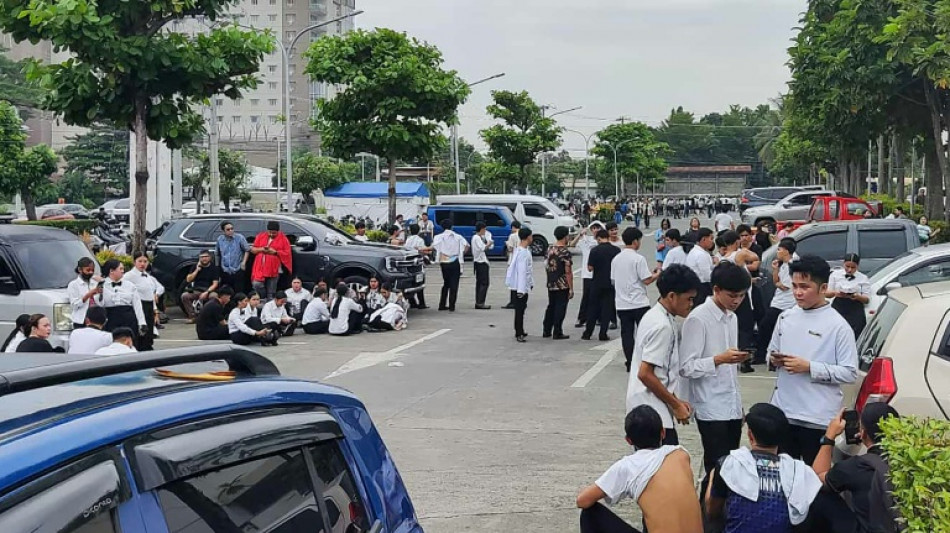

Two killed as major quake strikes southern Philippines
A powerful magnitude-7.4 earthquake struck off the southern Philippines on Friday, leaving at least two people dead and triggering regional tsunami warnings that were later lifted.
The quake hit about 20 kilometres (12 miles) off Manay in the Mindanao region at 9:43 am (0143 GMT), according to the United States Geological Survey.
One person was killed when a wall collapsed in Mati city, near the epicentre, police said.
The quake also caused a local man to have a fatal heart attack, the city disaster office told AFP.
Philippine authorities issued a tsunami warning and ordered evacuations of coastal communities on the eastern seaboard deemed at risk from waves of up to three metres (10 feet) high, but only a 32-centimetre (1-foot) wave was observed and the alert was later lifted.
The Pacific Tsunami Warning Center also lifted its alert for the Philippines, Palau and Indonesia at around noon, saying "there is no longer a tsunami threat from this earthquake".
Wes Caasi, a local official in Tagum city, northwest of Manay, told AFP that a government event at the city hall was thrown into chaos as "the people panicked, they screamed and ran".
Confirming videos that circulated on social media, Caasi said he saw city workers scrambling down a metal Christmas tree they were decorating when the quake struck.
Other witnesses said they saw students and workers pouring out of schools, office buildings and shopping malls.
Video clips verified by AFP also showed people holding on to flower boxes or to each other while crouching low to avoid falling as the open ground rocked violently.
So far, the tremors seem to have caused minor and scattered damage, according to witnesses.
Dianne Lacorda, a police officer in Davao Oriental province, told AFP that power and communication lines had been severed and authorities were struggling to assess the damage in some areas.
The provincial government said on Facebook that it had suspended classes "until further notice" and had sent non-essential public workers home.
- 'Shaking was so strong' -
Christine Sierte, a teacher in the town of Compostela near Manay, told AFP she was in the middle of an online meeting when the violent shaking started.
"It was very slow at first, then it got stronger.... That's the longest time of my life. We weren't able to walk out of the building immediately because the shaking was so strong," she said.
"The ceilings of some offices fell, but luckily no one was injured," she said, adding that some of the school's approximately 1,000 students "suffered panic attacks and difficulty in breathing".
Kath Cortez, a local journalist based in Davao city to the west of Manay, told AFP that small cracks had appeared in the ground floor walls of her family's home.
"I was surprised by the strength" of the quake, she said, adding that members of her family ran out of the house.
Around the same time as the Philippine quake, USGS reported a shallow 6.2 magnitude tremor just over 140 kilometres southeast of Manus Island in Papua New Guinea.
Another quake struck on Tuesday near the Papua New Guinea's second-largest city of Lae. No major damage was reported.
The latest Philippine quake struck 11 days after a 6.9-magnitude one killed 75, injured 1,271 others according to an updated official tally.
Earthquakes are a near-daily occurrence in the Philippines, which is situated on the Pacific "Ring of Fire", an arc of intense seismic activity stretching from Japan through Southeast Asia and across the Pacific basin.
An 8.0-magnitude quake off Mindanao island's southwest coast in 1976 unleashed a tsunami that left 8,000 people dead or missing in the Philippines' deadliest single natural disaster.
姜-A.Jiāng--THT-士蔑報


